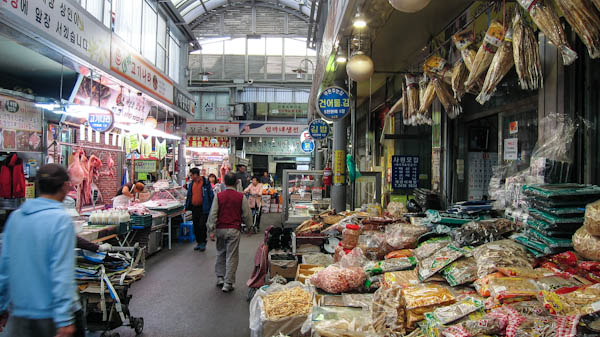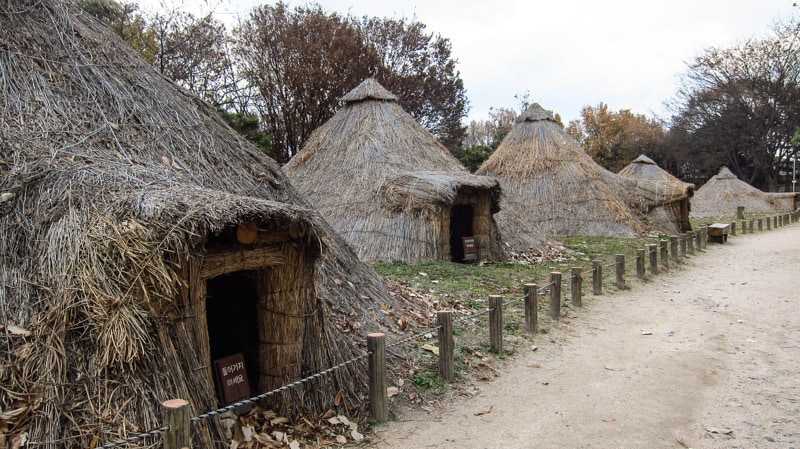
Amsadong Prehistoric Settlement Site, discovered in 1925, was once the location of a Neolithic village situated on the Hangang River over 6,000 years ago. The site was discovered in 1925 after a flood revealed buried earthenware pots. Excavation work did not begin until 40 years later in 1967.
After heavy rain in 1925, the Hangang River flooded and soil was swept away. After the water receded, earthenware and stoneware were exposed that had been covered for thousands of years.
Though the area was slightly excavated at the time of the discovery, it was not until 1957 that the site was thoroughly investigated by Kyunghee University and not fully excavated for another 10 years. In 1968, Seoul National University College of Education performed the first major and official excavation. From 1971 to 1975, the National Museum of Korea performed four separate excavations.
The site was the largest prehistoric settlement ever discovered in Korea.
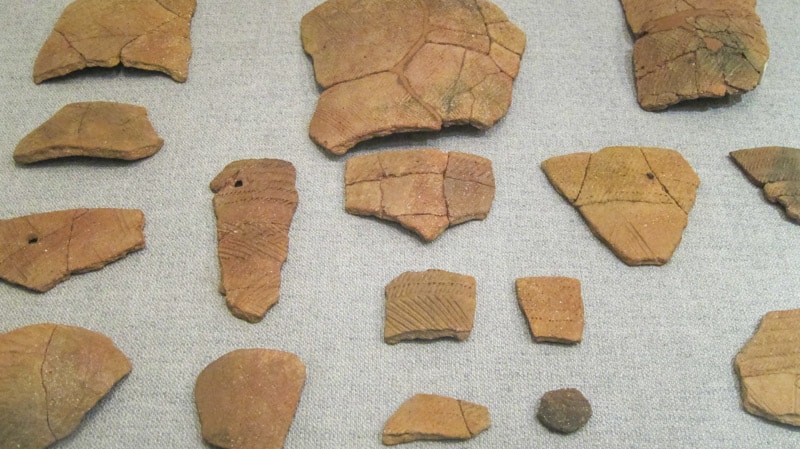
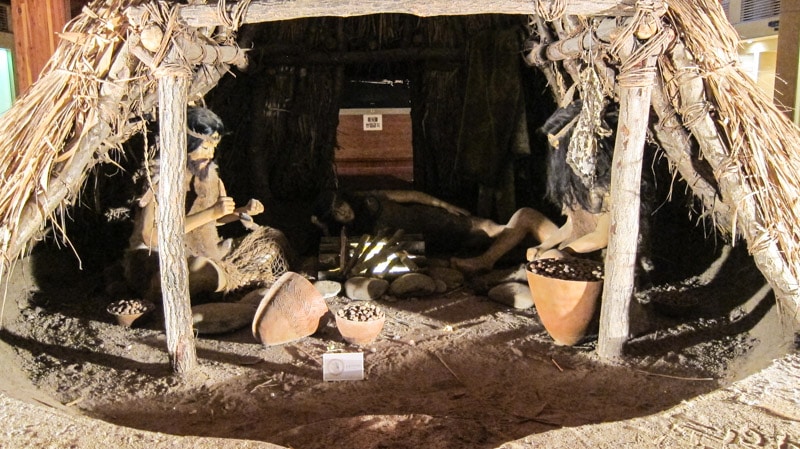
Excavations revealed about 30 pit houses, annexes, stone mounds, and other tools. The circular pits houses here were built into the sandy soil. They featured a rock furnace at the center and multiple supporting beams. Outside of the houses were storage pits and shell mounds which were found to have traces of charcoal, burnt soil, mold, and earthenware indicating the location of fires or furnaces.
Many sharp pieces of pottery, which are made from soil mixed with talc, can be found here along with stoneware including axes, spears, grinding stones, and arrowheads. Other miscellaneous tools and items uncovered here include fishing nets, bird bones, and acorns.
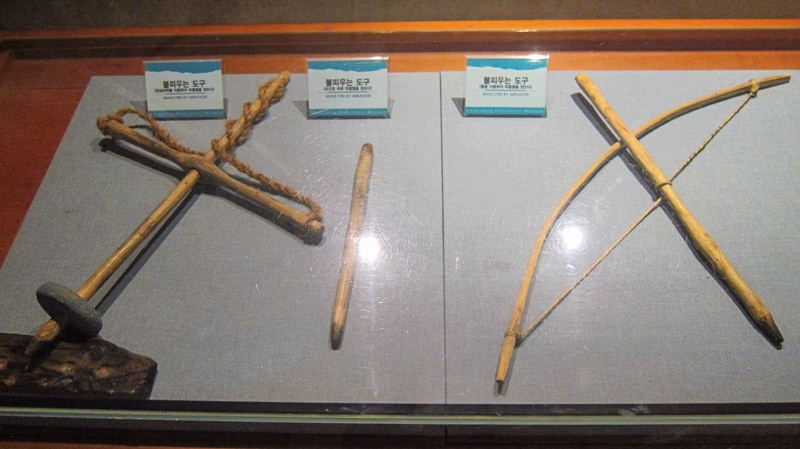
Through carbon dating, researchers found that the Amsadong Prehistoric Settlement Site was first settled in the Neolithic period (New Stone Age) between 3,500 and 6,400 years ago.
Excavations have found three separate strata, or layers, from different periods of history. The Neolithic period stratum contains comb pattern pottery. The Bronze Age stratum was found to contain min-patterned earthenware, bangchucha (used for weaving), and bronze arrowheads. The Baekje stratum was found to contain wooden jars, earthen coffins, and iron axes.
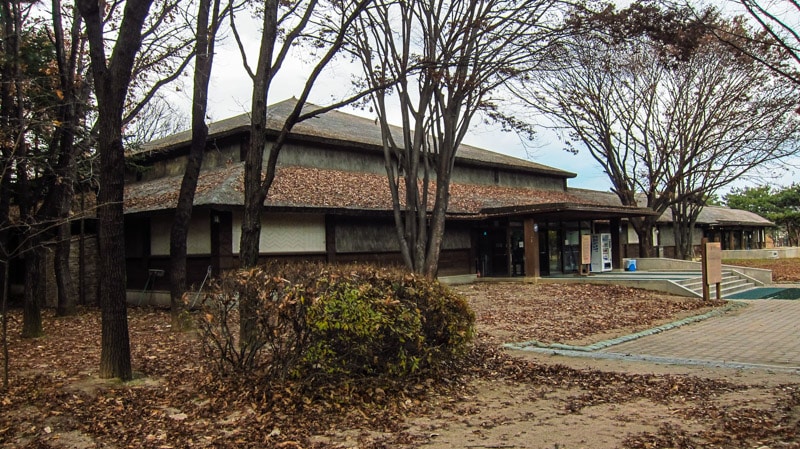
The Prehistoric Settlement Site Experience Hall and Exhibition Center features two halls with exhibits and relics that show what prehistoric life on the Korean peninsula was like and how the people lived.
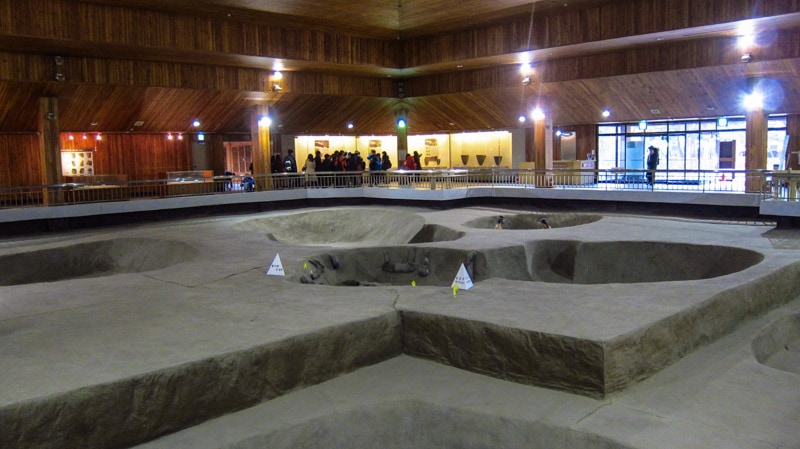
Exhibition Hall 1, which opened in 1988, encloses the actual excavation area of the fourth excavation done by the National Museum of Korea in 1975. The hall also displays eight hut sites, a storage pit, and a number of relics.
Exhibition Hall 2 uses models, videos, and an information search center to help visitors better understand the culture and life of the people who settled here thousands of years ago.
Amsadong Settlement Prehistoric Site Information
Hours
Monday - Sunday: 9:30 AM - 6:00 PM (last entry at 5:30 PM)
Free Admission
October - March: 6:00 AM - 9:00 AM
April - September: 5:30 AM - 9:00 AM
Closed on: Mondays & January 1
Admission
Adults (Ages 19-64): 500 won
Youth (Ages 7-18): 300 won
Seniors (Over 65): Free
Child (Under 7): Free
Address
158 Amsa-dong, Gangdong-gu, Seoul, South Korea
GPS Coordinates: 37.560687, 127.130385
How to Get Here
Take Subway Line 8 to Amsa Station (Exit 1).
Take Gangdong Bus 02 and get off at the fourth stop.
Cross the street to reach Amsa-dong Prehistoric Settlement Site.
Map
Official Website
http://sunsa.gangdong.go.kr/site/eng/content/Introduction_culture
Additional Resources
Viator by TripAdvisor
Viator is a popular online platform that helps travelers book tours, activities, and unique experiences worldwide, including in Seoul. It connects users with a wide selection of options – from sightseeing tours to cultural events and outdoor adventures – all offered by local providers.
Klook
Klook offers discounted tickets and reservations for various attractions and services in Seoul, from theme parks and museums to tours and transportation options.
Rakuten
Save money while exploring Seoul with Rakuten's cashback program. Book your hotels or other services through Rakuten and enjoy cashback rewards and exclusive deals.
If you sign up using the link below, you could earn $30 cashback on your first purchase over $30.
Book Recommendations
For an immersive guide to Seoul, many travelers choose to bring a book along. Fodor's Seoul, for example, offers detailed recommendations on sights, restaurants, maps, and travel tips.
Nearby Sights
Cheonho Park
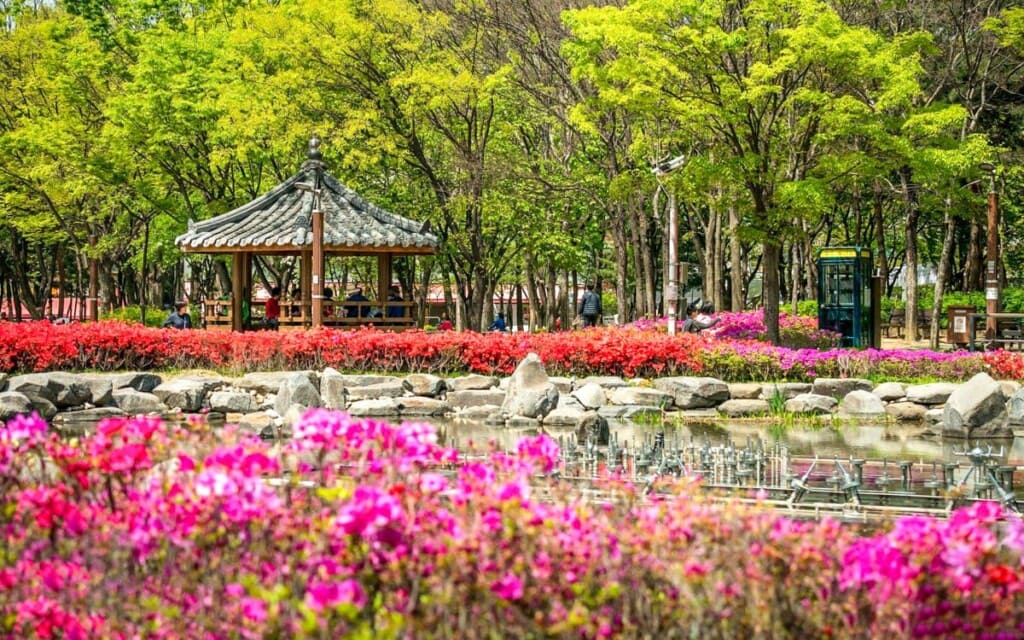
Cheonho Park is a small neighborhood park located in southwestern Seoul, not far from Gwangnaru Hangang Park and Amsa-dong Prehistoric Settlement Site. Though small, the park features a musical fountain, library, outdoor stage, and walking paths. There are also various sports facilities including a basketball court and volleyball court. Though located in the center of the city, Cheonho Park provides a space for relaxation for both locals and tourists.
Gwangjin Forest Naru Park
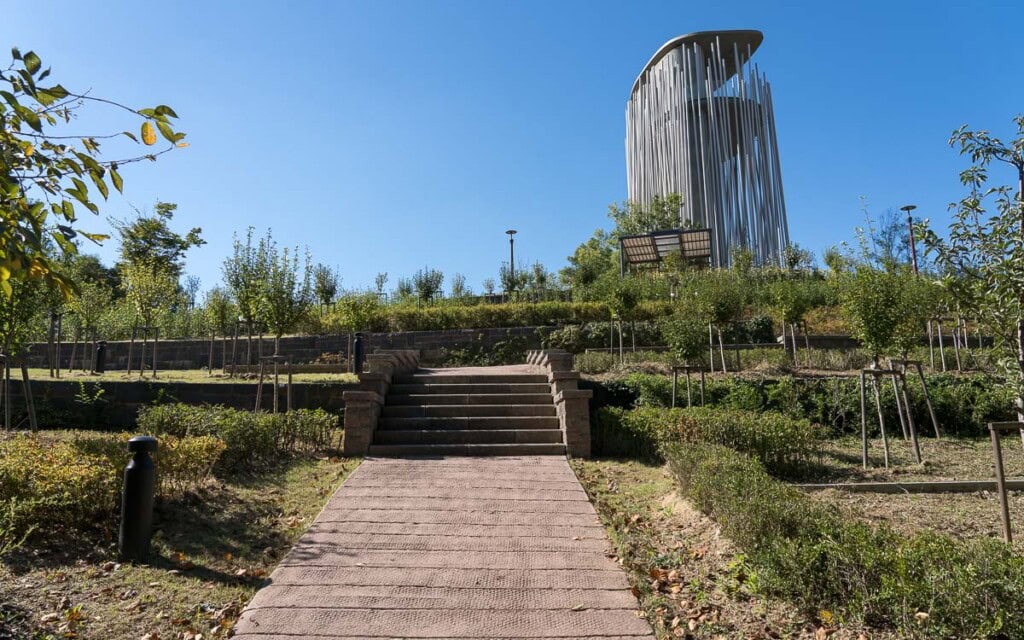
Gwangjin Forest Naru Park is a neighborhood park located in Gwangjin-gu, between Guui-dong and Gwangjang-dong, close to the Hangang River. The park has two sections on both sides of Cheonho-daero at the northern end of the Cheonho-daero Tunnel. Since the 1970s, the area has gone through various stages of development.
Techno Mart
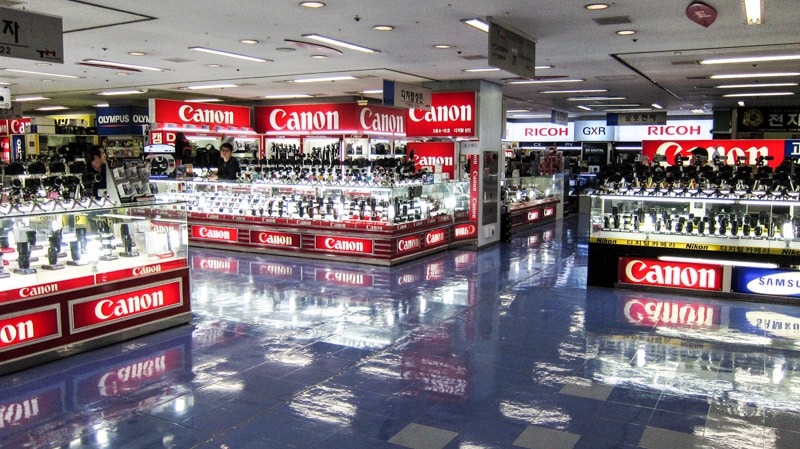
Techno Mart is an eight floor shopping mall and marketplace with over 2,000 electronic stores selling every type of electronics, appliances, and gadgets. If you are in Seoul and you need electronics at reasonable prices, then this in your place. You can find computers, televisions, mobile phones, cameras and lenses, sound systems, computer parts, DVDs, CDs, home appliances, and more.
Olympic Park
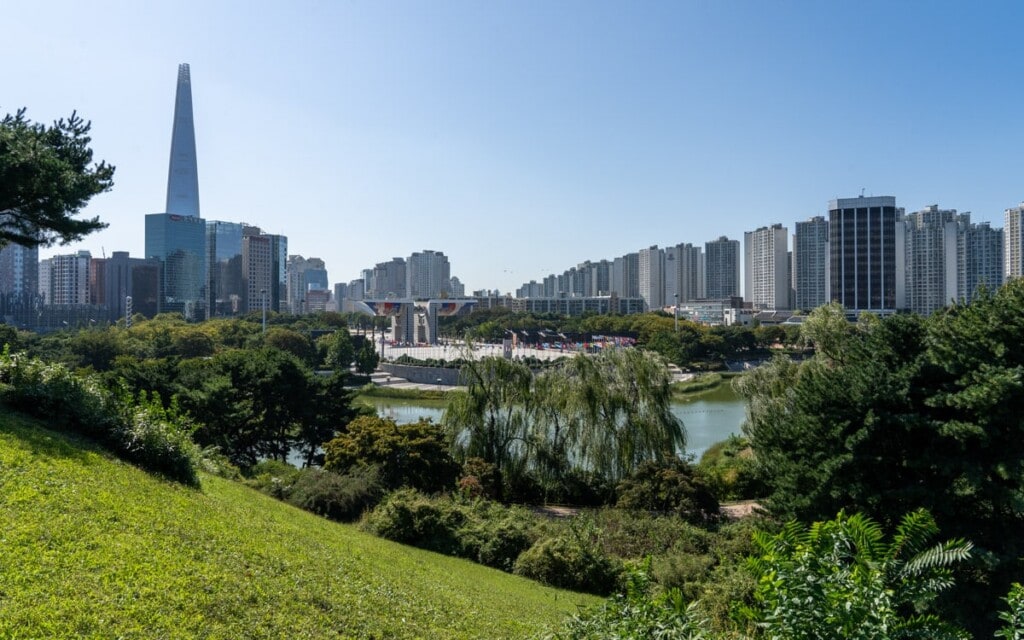
Seoul Olympic Park, or Olpark, is a large outdoor recreation area, sporting venue, and park that was built for the 1988 Summer Olympics. Just a few of the facilities built for the Olympics include a swimming pool, gymnastics arena, tennis courts, fencing gymnasium, and velodrome. The park is large and covers an area of over 1.4 million square meters.
World Peace Gate
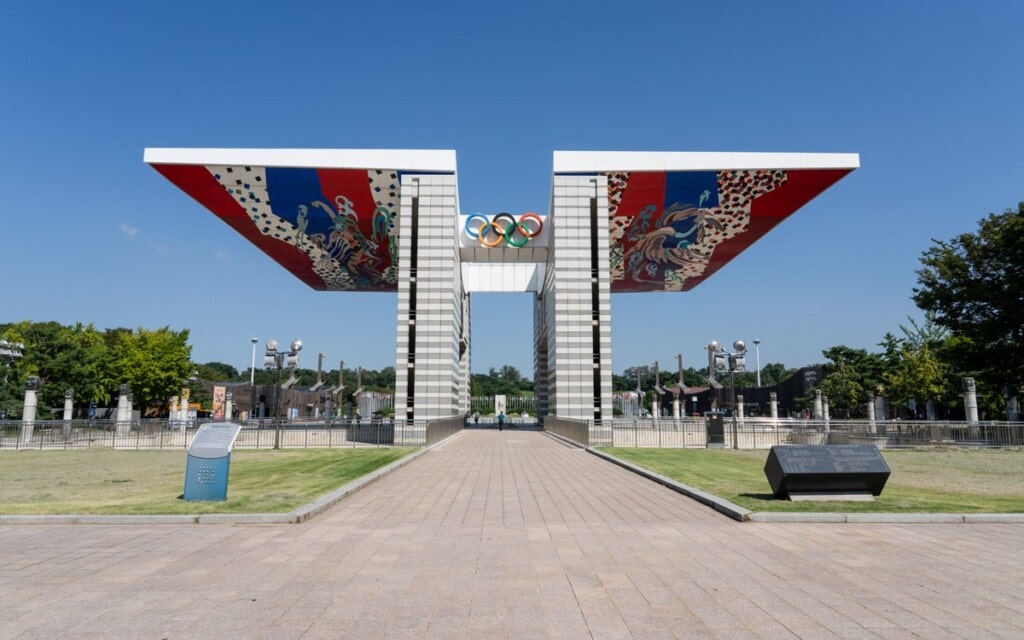
World Peace Gate is a colorful gate located at Olympic Park. It was built as a sign of peace and harmony for the 1988 Seoul Summer Olympics which took place in September and October, 1988. Construction began on December 31, 1986 and was completed on August 31, 1988. It was designed by architect Kim Chung-up. The area of the site measures in at 80 meters (262 feet) by 420 meters (1,377 feet).
Last Updated on Mar 14, 2025
